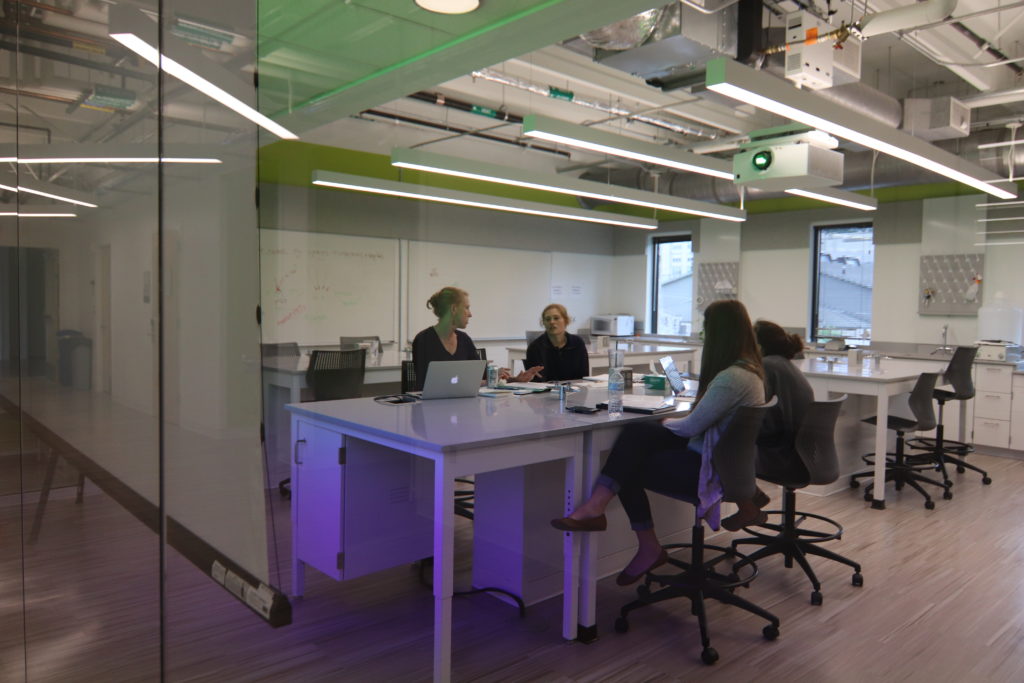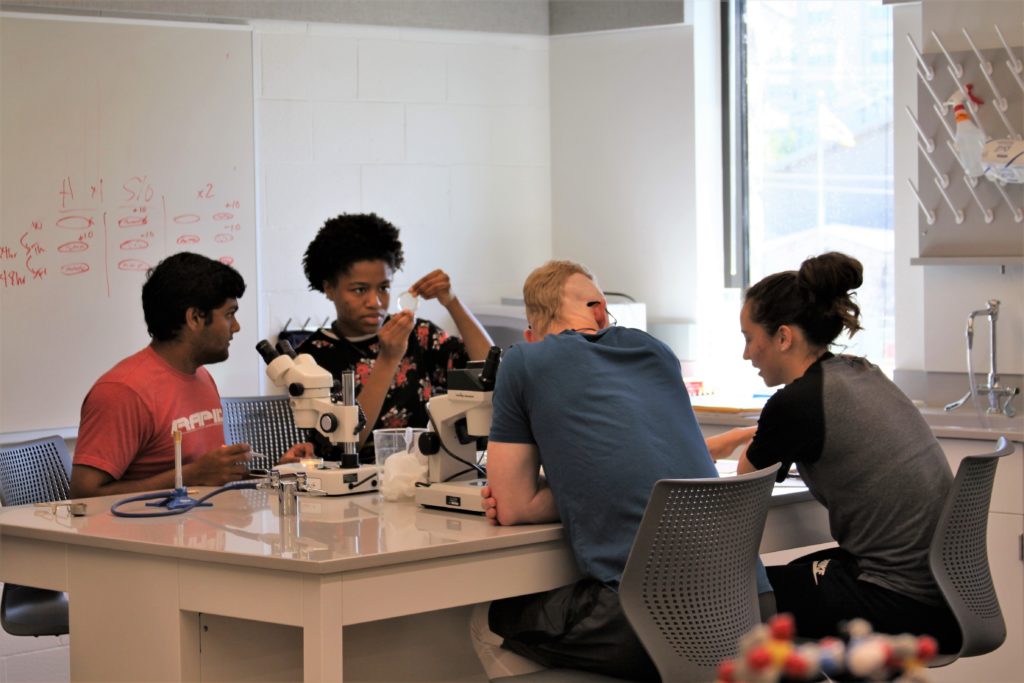‘Summer break’ was a bit of a misnomer for the Oglethorpe sciences, with professors busy over the past few months with research projects in biology, chemistry, and physics. They are also working to make undergraduate research part of the Oglethorpe culture, and ensure every student who wants to work with faculty has that opportunity.

Dr. Lea Alford at a weekly lab meeting with research students. Alford currently has four students working with her through an NIH grant.
“This is normally what happens with the faculty during the summertime, that’s what we do. We do research,” said Dr. Lea Alford, assistant professor of biology. “Everybody has projects and that’s when you get the meat of your actual research work done.”
Faculty have in the past done the bulk of their research off-campus, such as Dr. Karen Schmeichel, assistant professor of biology, who has a joint grant with faculty at Emory University. And while that connection, and a similar agreement with Mercer University, have provided lab positions for Oglethorpe Honors students, the science division is looking to expand its reach at home.
“We have an undergrad research committee,” explains Alford. “The idea is that we will advertise all the research opportunities that are available — faculty mentor research is the kind of stuff we’re talking about — between Emory, between Mercer, between us, all the different departments from the whole division.”
Alford says the committee acts as a filter for those students interested in participating in research. It aims to help properly vet and match students with faculty.
“I tell them to pick a mentor, not a project, because you’ll fall in love with the science if you have a good scientist who’s a mentor,” Alford says. “Our first goal is mentorship. Publication falls after that, but usually they come hand-in-hand.”
With the new Cousins Center for Science and Innovation, Alford and fellow science faculty are having more chances to place students on research projects within Oglethorpe halls. Alford is in the second year of a National Institute of Health grant studying the molecular assembly of cilia using the single-celled green algae, Chlamydomonas, as a model genetic system, and had four students — Ariana Jimenez, Bethany Malskis, Reagan Goodwin, Courtney Stuart — working in Cousins Center biology labs over the summer. Alford’s NIH grant supported two of those students with a stipend and the other two were enrolled in BIO 400 Advanced Independent Study. Three students will continue on the project during the fall semester.
Dr. Andrew Walden, assistant professor of organic chemistry, is also benefiting from the new space allowed by the Cousins Center. He recently set up a new Nuclear Magnetic Resonance spectroscope for research and course work, and is excited about the upcoming potential of building out facilities.
“Building a lab is a great experience for students — you learn a lot about what you need, you learn where everything is, you learn how everything’s put together,” Walden said. “While it is a faculty-led research project, a big part of the students’ involvement is directing [lab set-up] as much as they can because I want them to be interested in it and also because it’s a really important experience.”Student Taylor Turner spent the summer helping Walden establish the research space, as well as working on a separate research project.
Walden and Alford’s expansion into research on Oglethorpe’s campus is not uncharted territory, but changing the perception of research as something that is only done at other institutions is something they hope to change in the near future.
“I like the fact that we formalized the undergraduate research committee. It doesn’t put barriers between the students and these research opportunities, but it has everyone on an equal footing,” Walden said. “These kinds of boards don’t exist at other places.”
Alford agreed that the Oglethorpe faculty is opening up more doors to more students with the new state-of-the-art facilities and an undergrad research-focused committee.
“Usually research positions go to students with not just the top GPAs, but the ones who know those positions exist out there,” Alford says. “Having all interested students come to the committee first lets students who might not understand the traditional pathways to research also have the same opportunities and allows us to help place students in the best fit with a mentor.”

Students performing tests in a Cousins Center lab.
